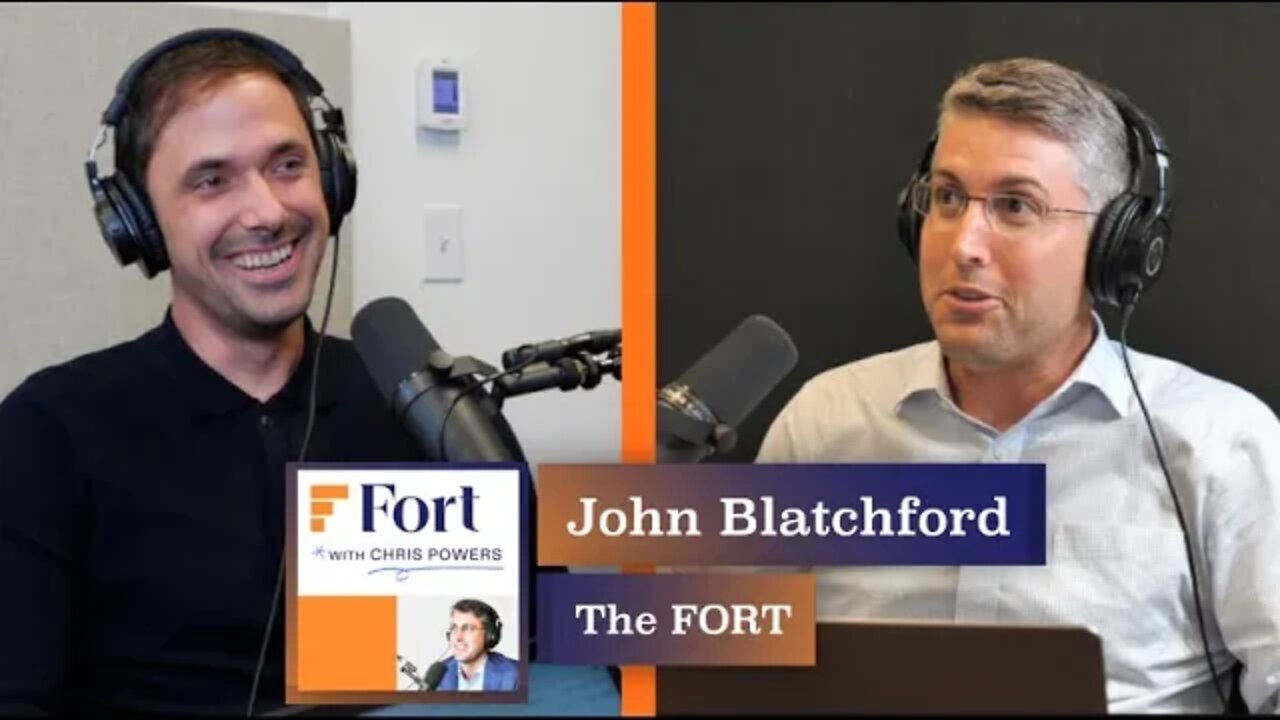Premium Only Content

RE #179: John Blatchford - Owner of Kunst MF - "Historic Real Estate Tax Credits 101"
John Blatchford is the Owner of Kunst, a real estate developer in Cincinnati, Ohio that renovates historic buildings into city apartments by utilizing historic tax credits and Opportunity Zone investments.
This episode is a deep dive into The Historic Real Estate Tax Credit, John breaks down the entire process from what buildings qualify, how to apply, the difference between the state and federal credits, how they use the credits and much more. Enjoy!
Follow Chris on Twitter: https://www.Twitter.com/FortWorthChris
Follow Chris on LinkedIn: https://www.linkedin.com/in/chrispowersjr/
Learn more about Chris Powers & Fort Capital: https://www.FortCapitalLP.com
Follow Fort Capital on LinkedIn: https://www.linkedin.com/company/fort-capital/
Listen & Subscribe on Spotify: https://open.spotify.com/show/7oIeNSaSJ4zkTQOXiedyOr?si=dEM48cSPQ9OIQ1HiD8sjrg
Listen & Subscribe on Apple Podcasts: https://podcasts.apple.com/us/podcast/the-fort-with-chris-powers/id1410549811
00:11 - John’s Background and Career
03:38 - What are you focused on at Kunst?
04:40 - The Cincinatti Market
06:41 - The Historic Tax Credit
07:49 - How do LP’s benefit from this Tax Credit?
08:52 - How do you use the credit?
10:13 - How do you begin the process of getting the credit?
11:57 - How often does the state approve these credit applications?
12:18 - What’s work has been done before applying?
13:45 - What are the things you did wrong on the first deal that are easy fixes on deal 14 and onward?
14:55 - Do you have to own the property before submitting an application or can you be under contract?
15:39 - Does anyone actually come to visit the property from SHIPO?
16:17 - How much of the building needs to be ‘saved’ in order to qualify for the tax credit?
17:49 - How vacant are these properties when you acquire them?
18:49 - If a building is totally bombed out, do renovations have to match the aesthetics of the time or can it be built to look more modern?
19:23 - Why do states and federal governments care so much about preserving the historical nature of these buildings?
20:39 - Is there a point where the building is in such poor condition where you have to demo it?
21:18 - Would a ground-up development require a historic-style building to go up?
21:49 - Who’s the target demo for these buildings?
22:45 - Do you have challenges finding subcontractors for this work?
23:40 - Does refurbishing of these historic doors and windows usually happen on-site?
24:32 - What are the typical things that need to be preserved?
28:00 - Dealing with the Historical Board
29:09 - Can you start construction during the application process?
29:28 - What does the approval document look like?
29:57 - What happens if a project goes over budget?
30:19 - What do you do when you receive the cash from the credit?
30:55 - What do you typically do with the federal credit that comes in?
31:44 - Could someone with no involvement in the project purchase the federal credit?
32:11 - How are those credits valued when you go to sell them?
34:15 - Do you ever sell the credit in whole?
35:23 - Is there an online marketplace where you can list these credits for sale?
37:46 - Is there a place people can go to see all the federal tax credits that were awarded in a year to try and buy them?
39:00 - Who are you usually selling your federal credits to?
39:35 - Do you use credit value as equity?
40:04 - Would these deals work without the tax credit?
40:30 - Do you work with consultants during the application process?
41:11 - What are the requirements for architecture plans?
41:36 - What are the three parts of the historic process?
42:58 - How do you structure your exits?
43:42 - Do you have to hold the building for a certain amount of time after completion?
44:27 - Do you need a specific type of loan for these deals?
45:06 - What confidence do you have in the legislation to boost the credit to 30%, and has it played into your underwriting?
45:50 - Why do state and federal percentages differ?
46:09 - Why do consultants stratify State & Federal reimbursement amounts at different percentages and why should one count more on the state than fed when underwriting for total possible dollars reimbursed?
46:28 - What concerns you most when the size of a project increases?
47:21 - What’s the largest project you could possibly do in your market?
47:59 - How often do you see projects that are missing out on these tax credits?
49:14 - What would it cost to hire a consultant to work on getting these credits?
49:43 - How would you find a consultant?
50:22 - Is there anything within landscaping that falls under the criteria?
The FORT is produced by Johnny Peterson & Straight Up Podcasts.
-
 1:29:55
1:29:55
WickedVirtue
4 hours agoLate Night Fortnite w/ Friends
43.3K -
 3:34:06
3:34:06
This is the Ray Gaming
5 hours ago $0.55 earnedCould you be? Would you be? Won't you be my RAYBOR? | Rumble Premium Creator
25.7K -
 1:46:52
1:46:52
JahBlessGames
6 hours ago🎉Come een' and come tru' - VIBES | MUSIC | GAMES
46K -
 38:47
38:47
MattMorseTV
8 hours ago $13.55 earned🔴Tulsi just CLEANED HOUSE.🔴
63.7K101 -
 6:24:06
6:24:06
Reolock
8 hours agoWoW Classic Hardcore | WE'RE BACK!!
28.1K1 -
 3:46:13
3:46:13
SynthTrax & DJ Cheezus Livestreams
10 hours agoShell Shock Live - The Scorched Earth Remake/Upgrade - 4pm PST / 7pm EST - RUMBLE GAMING
45.7K -
 2:56:57
2:56:57
Illyes Jr Gaming
7 hours agoBack to Black .....Ops 6 w/ ILLYESJRGAMING
29.4K1 -
 1:07:59
1:07:59
BonginoReport
10 hours agoBoston Mayor Defies Trump, Protects Illegals - Nightly Scroll w/ Hayley Caronia (Ep.115)
130K97 -
 40:45
40:45
Donald Trump Jr.
10 hours agoPeace by Peace: Solving One Problem After Another | Triggered Ep.268
76.2K65 -
 5:19:04
5:19:04
FrizzleMcDizzle
7 hours ago $1.81 earnedRemnant 2 - Dark Souls-like Shooter?!
23.9K